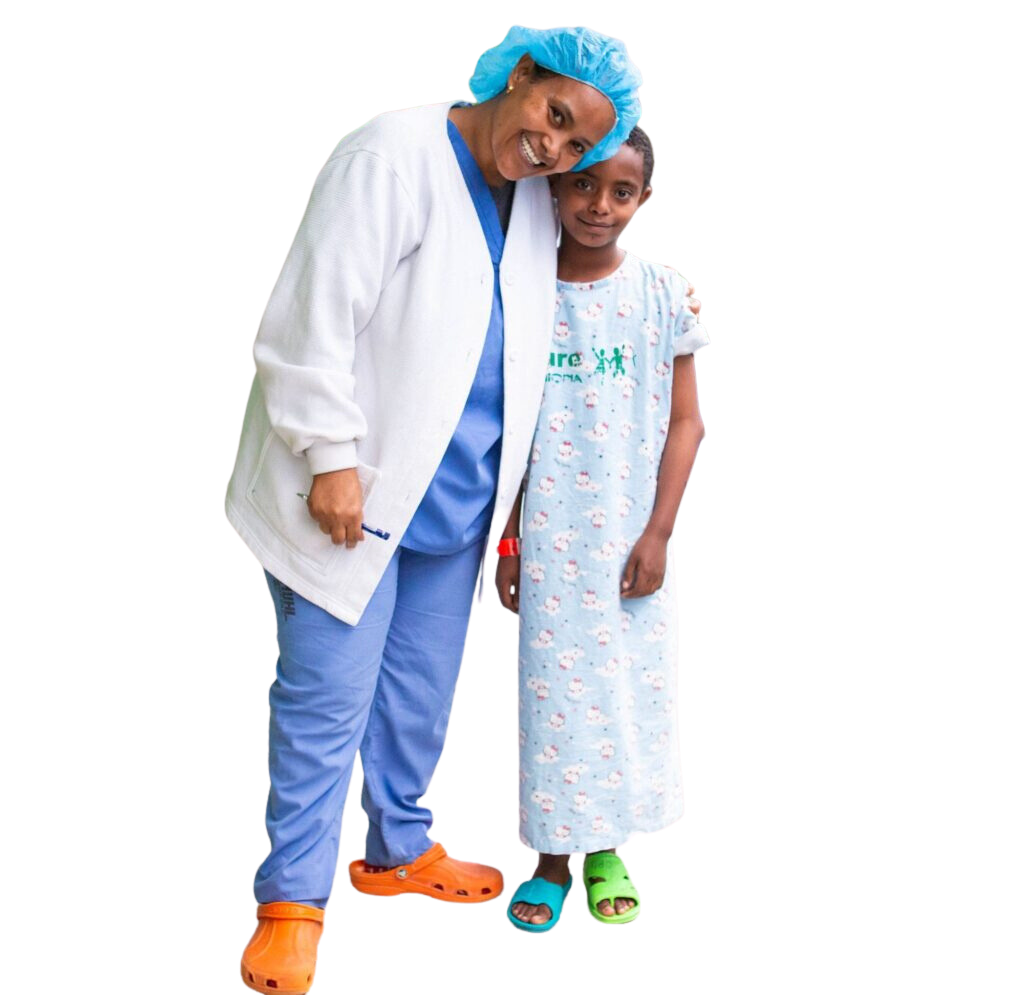We are thrilled to announce the opening of CURE Ethiopia’s brand new gait laboratory, the first of its kind in the country and the only other active gait lab on the African continent outside of South Africa.
A gait lab uses special motion-capture cameras (the same type of cameras used for making animated movies and computer games) to track a patient’s movement. In the lab, reflective markers are placed all over the patient’s body. The cameras emit light, and when that light is reflected via the reflective markers, the camera follows its movement, thereby recording the joint motion tracking the patient’s movement. In addition to the cameras, the patient also walks on sensitive plates that provide further information. The innovative technology is primarily used for patients with neuromuscular disorders (like cerebral palsy) to analyze their walking and to help determine the ideal treatment for the patient.
The gait lab equipment was donated to CURE Ethiopia by three different companies (VICON, AMTI, and NOVEL) coordinated by our friends at Oxford University. Dr. Tim Theologis, a pediatric orthopedic surgeon and specialist in cerebral palsy from Oxford, has been integral to the project. Dr. Julie Stebbins, an international authority on gait analysis, came to install the equipment and train our doctors and physicians. Dr. Stebbins, who completed her doctorate in bioengineering and biomedical engineering, works in Oxford’s gait laboratory. “I do the clinical part of the research,” says Dr. Stebbins. “We mostly see children who have problems walking, and we measure their gait with the cameras to help find treatment options for them.”


Andy Groop, Andrew Betteridge, and Abel Korra, all CURE co-workers, did an incredible job designing and building the gait lab. Before Dr. Stebbins arrival, the laboratory was completely prepared for equipment installation, and because of their attention to excellence and detail, Dr. Stebbins was able to complete the installation and start assessing the first patients.
The new lab will help the doctors assess complex orthopedic problems. Gait labs have become an essential part of the care of children in large pediatric orthopedic centers in North American and Europe, and we are delighted that we can provide the service here, in Ethiopia. The insight that the lab will give our doctors will enable them to provide the best individualized care that will transform many lives.
While the gait lab assists doctors in identifying the problem, it also helps to measure the outcome of treatment. Over time, the research gathered will further the improvement of treatment. We anticipate that future research should eventually help kids with untreated clubfoot, hip disorders, and even children with brachial plexus palsy!
“Besides helping those who struggle to walk, the gait lab will also help with other things, too! You can measure hand and arm function using the same camera, assess children with cerebral palsy, and you gain information to provide treatment or conditions related to the motions of arms and hands. We mainly use the lab for walking disabilities, but in the future, implementation of the equipment can be extended for other uses, for example, arms.” Dr. Stebbins told us.

The gait lab wouldn’t be possible without our friends at Oxford University. We would like to recognize the generosity of the following companies who donated the equipment: VICON, for the motion capture and EMG system; AMTI for the force plates; and NOVEL for the pedobarograph. We also extend special thanks to Tim Beacon, CEO of Medaid, who safely stored the equipment in the UK and arranged to ship it to Ethiopia. Of course, we are also thankful for Dr. Stebbins, whose time and expertise has been truly invaluable.
We are proud to announce that our brand new gait lab has and already helped two of our patients. We can’t wait to report about the extraordinary impact it will make in the lives of our patients in the months to come.




Click below to learn more.
About the CURE Children’s Hospital of Ethiopia
Established in 2008, CURE Ethiopia performs over 2,500 life-changing reconstructive and orthopedic surgeries every year for children suffering from treatable disabilities. Strategically located in the capital city of Addis Ababa, the teaching hospital has 70 beds and four operating rooms. CURE International uses this facility to multiply its efforts by partnering with The College of Surgeons of East, Central, and Southern Africa (COSECSA) to serve as a regional learning institution by implementing an orthopedic pediatric training program at the residency and fellowship levels. In addition to world-class clinical service, CURE Ethiopia ministers to the emotional and spiritual needs of patients and their communities.




